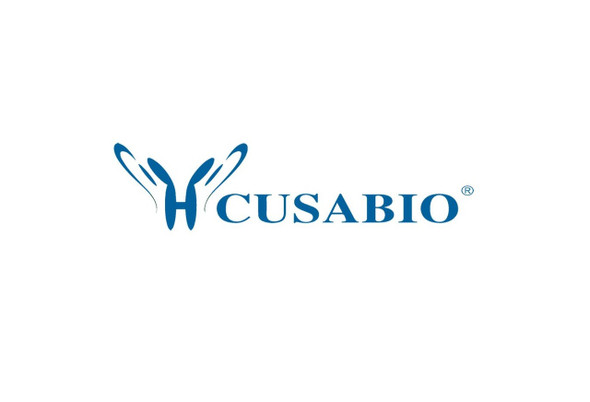Cusabio Human Recombinants
Recombinant Human Arylacetamide deacetylase (AADAC), partial | CSB-EP001014HU
- SKU:
- CSB-EP001014HU
- Availability:
- 3 - 7 Working Days
Description
Recombinant Human Arylacetamide deacetylase (AADAC), partial | CSB-EP001014HU | Cusabio
Alternative Name(s): AAAD_HUMAN; Aada; Aadac; Arylacetamide deacetylase (esterase); Arylacetamide deacetylase; CES5A1; DAC
Gene Names: AADAC
Research Areas: Signal Transduction
Organism: Homo sapiens (Human)
AA Sequence: PDNVEEPWRMMWINAHLKTIQNLATFVELLGLHHFMDSFKVVGSFDEVPPTSDENVTVTETKFNNILVRVYVPKRKSEALRRGLFYIHGGGWCVGSAALSGYDLLSRWTADRLDAVVVSTNYRLAPKYHFPIQFEDVYNALRWFLRKKVLAKYGVNPERIGISGDSAGGNLAAAVTQQLLDDPDVKIKLKIQSLIYPALQPLDVDLPSYQENSNFLFLSKSLMVRFWSEYFTTDRSLEKAMLSRQHVPVESSHLFKFVNWSSLLPERFIKGHVYNNPNYGSSELAKKYPGFLDVRAAPLLADDNKLRGLPLTYVITCQYDLLRDDGLMYVTRLRNTGVQVTHNHVEDGFHGAFSFLGLKISHRLINQYIEWLKENL
Source: E.coli
Tag Info: N-terminal 10xHis-SUMO-tagged and C-terminal Myc-tagged
Expression Region: 24-399aa
Sequence Info: Partial
MW: 63.1 kDa
Purity: Greater than 90% as determined by SDS-PAGE.
Relevance: Displays cellular triglyceride lipase activity in liver, increases the levels of intracellular fatty acids derived from the hydrolysis of newly formed triglyceride stores and plays a role in very low-density lipoprotein assembly. Displays serine esterase activity in liver. Deacetylates a variety of arylacetamide substrates, including xenobiotic compounds and procarcinogens, converting them to the primary arylamide compounds and increasing their toxicity.
Reference: "Human liver arylacetamide deacetylase. Molecular cloning of a novel esterase involved in the metabolic activation of arylamine carcinogens with high sequence similarity to hormone-sensitive lipase." Probst M.R., Beer M., Beer D., Jenoe P., Meyer U.A., Gasser R. J. Biol. Chem. 269:21650-21656(1994)
Storage: The shelf life is related to many factors, storage state, buffer ingredients, storage temperature and the stability of the protein itself. Generally, the shelf life of liquid form is 6 months at -20?/-80?. The shelf life of lyophilized form is 12 months at -20?/-80?.
Notes: Repeated freezing and thawing is not recommended. Store working aliquots at 4? for up to one week.
Function: Displays cellular triglyceride lipase activity in liver, increases the levels of intracellular fatty acids derived from the hydrolysis of newly formed triglyceride stores and plays a role in very low-density lipoprotein assembly. Displays serine esterase activity in liver. Deacetylates a variety of arylacetamide substrates, including xenobiotic compounds and procarcinogens, converting them to the primary arylamide compounds and increasing their toxicity.
Involvement in disease:
Subcellular Location: Endoplasmic reticulum membrane, Single-pass type II membrane protein, Microsome membrane, Single-pass type II membrane protein
Protein Families: 'GDXG' lipolytic enzyme family
Tissue Specificity: Detected in liver (at protein level). Mainly expressed in liver, small intestine, colon, adrenal gland and bladder.
Paythway:
Form: Liquid or Lyophilized powder
Buffer: If the delivery form is liquid, the default storage buffer is Tris/PBS-based buffer, 5%-50% glycerol. If the delivery form is lyophilized powder, the buffer before lyophilization is Tris/PBS-based buffer, 6% Trehalose, pH 8.0.
Reconstitution: We recommend that this vial be briefly centrifuged prior to opening to bring the contents to the bottom. Please reconstitute protein in deionized sterile water to a concentration of 0.1-1.0 mg/mL.We recommend to add 5-50% of glycerol (final concentration) and aliquot for long-term storage at -20?/-80?. Our default final concentration of glycerol is 50%. Customers could use it as reference.
Uniprot ID: P22760
HGNC Database Link: HGNC
UniGene Database Link: UniGene
KEGG Database Link: KEGG
STRING Database Link: STRING
OMIM Database Link: OMIM









